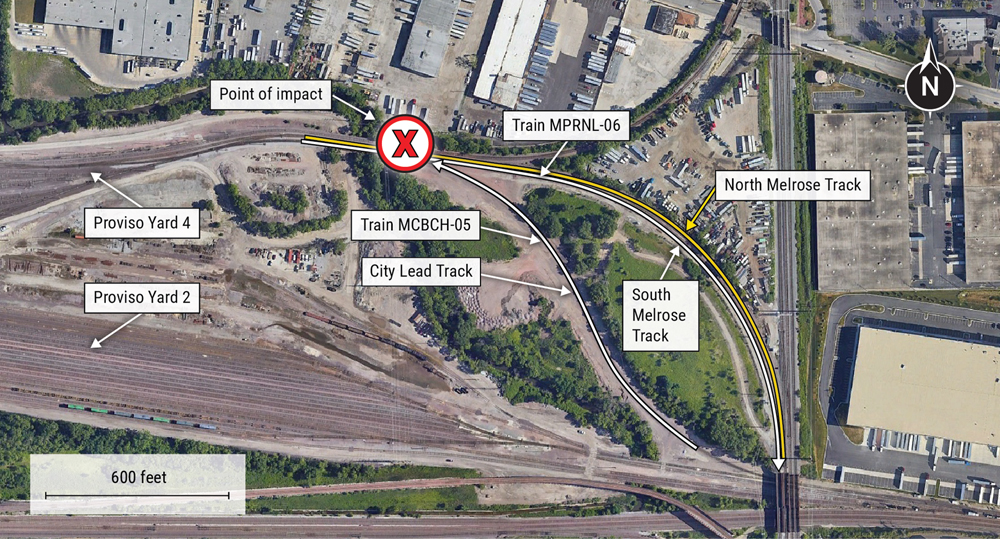The worldwide grounding of the Boeing 737 MAX fleet in the wake of two fatal crashes has not stopped rail shipments of new fuselages from Kansas to Washington State via BNSF Railway and regional Montana Rail Link.
Boeing has curtailed production of the 737 MAX for the duration of the grounding, which is related to a software glitch in the plane’s flight control system. Boeing is completing 42 aircraft per month, down from 52 before the newest version of the world’s most popular jetliner was grounded in March after crashes that killed 346 people.
Spirit AeroSystems, which manufactures the fuselage and other components at its assembly plant in Wichita, Kan., continues to produce 52 737 MAX fuselages per month under an agreement with Boeing, Spirit executives told an investor conference last month.
A plan to ramp up production to 57 planes per month, which had been scheduled for June, has been postponed indefinitely.
Meanwhile, 737 MAX fuselages continue to be loaded on flatcars in Wichita for the journey to Boeing’s assembly plant in Renton, Wash., via the BNSF-MRL-BNSF routing that has been used for years.
Last year, BNSF and Montana Rail Link celebrated the 10,000th shipment of 737 fuselages.
Boeing says the 737 MAX is the fastest-selling airliner in the company’s history, with 4,700 ordered from more than 100 airlines around the globe.
Boeing has a backlog of more than 4,400 737 orders, which translates into more than seven years worth of production at current rates.














Airbus had the proper plane l0 years ago with it’s monster the true double deck A380; a whole bunch of people 5 to 8 hundred would arrive at a major airport (Paris) and then connect to the rest of France of Europe via hi speed rail.
The delays in delivering the beast caused the cancellation of many orders even though the Boeing Dreamliner 787 also experienced delays but with no order cancellations of numbers.
The trend now is to send long range single aisle planes to smaller airports such as Dublin .
Airbus cannot sell the A380 even though it is a favorite of both passengers and crew.
This trend for long distance smaller aircraft does nothing to relieve the rush hour congestion at New York or Houston because with the A380 one takeoff slot takes 5 to 6 hundred folks to Europe that would require 3 of the smaller planes.
This trend is like the fad of precision railroading;; it has grabbed the airline industry and so it appears the A380 and 747 are history at least for now.
William; Air travel ending in 10 years is a bit of a stretch but certainly the environmental movement is against the tremendous growth in air travel. In Europe, the environmental movement is pushing rail travel. Haven’t heard much about it in the U.S. or Canada though.
Why would anyone think air travel is going to end in 10 years? I’m genuinely curious.
You don’t have 7 years production because if your plane crashes because you don’t have the extra downloadable upgrade or customers to take delivery and most importantly actually pay for them.
ROGER – That photo was in TRAINS-MAG. I don’t recall if it was on BNSF or MRL.
One or another versaion of the B-737 has been in production for 45 to 50 years and the count is beyond belief. (One or another vertsion of the DC-9, MD-80 series, or B-717 had a similiar run, now ended; many remain in service.) Aircraft production totals once were measured in hundreds (DC-8, B-707) but now are measured in thousands.
Long distance passenger trains? Dead or dying. Follow the thread on the blog about the fantasy VIA corridor. The rail system simply isn’t the same as when passenger trains were frequent. And it won’t change in the favor of VIA or Amtrak.
7 yrs worth of orders. Good news for BNSF & MRL. But I thought air travel was going to end in 10 years?
I remember seeing a photo a while back where several cars with these fuselages derailed and went down a bank.